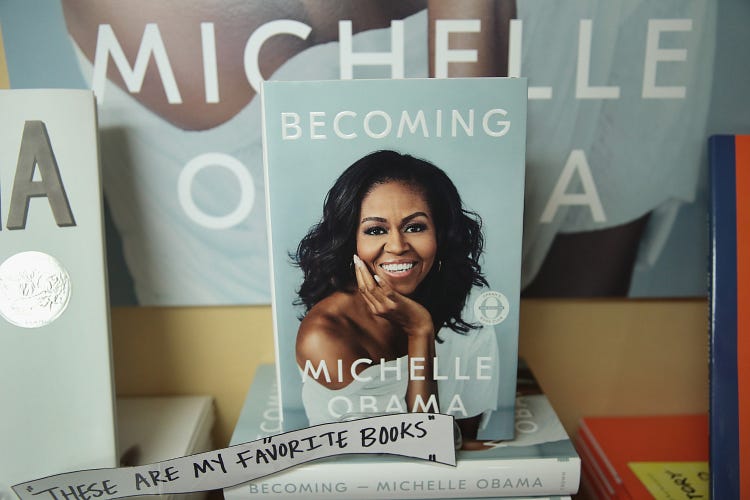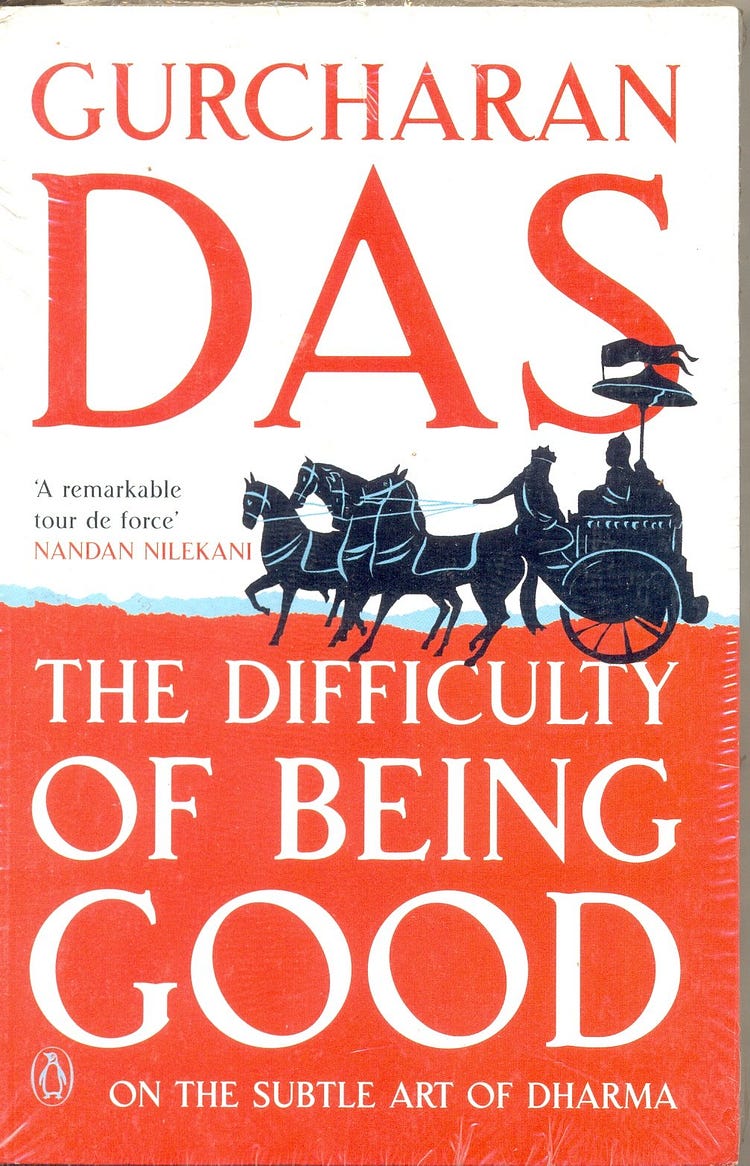At Shortlist, we want to make sure everyone has fun throughout the hiring process! We design human-centred products for our clients (employers) and candidates to help them enjoy the experience of recruiting and applying for jobs.
We’re excited to introduce our latest product — a new & improved candidate chatbot!
Candidates chat with a bot — that’s as sassy, funny, or straightforward as our clients want it to be — to share details about their background, skills, and experience. Shortlist configures the chat questions based on specific details employers need — no unnecessary questions, and no boring forms!
Today, we’re launching a more flexible and interactive chatbot that will enhance the recruitment process for both applicants and employers alike. Take a look at our latest features!
A more interactive application experience for candidates
Hundreds of thousands of candidates across Africa and India have applied to jobs on Shortlist, and we want them all to know that we’re on their side! We try to understand these candidates as people — what they love and hate about job applications, what aspects of the process stress them out the most, and what they’d love companies to do differently. (We also engage with candidates on several other exciting topics, but not all result in a new product build 😊).
We took all of this into account when creating our new chatbot. Here’s what candidates are most excited for:
Better communication: Candidates can preview a job application before they dive in, see how long they have before the deadline, and track the progress of their application.
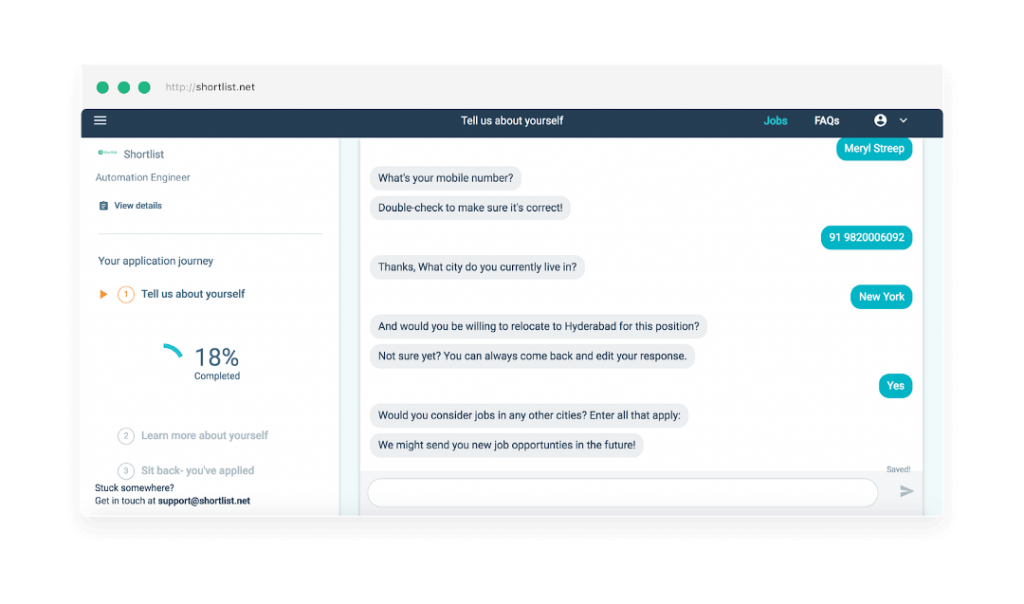
Candidates track progress through the application and chat using an intuitive interface.
More human interactions: A WhatsApp-esque chat interface makes it more enjoyable for candidates to share details about their careers and interests.
Easier navigation: Unlike most structured forms, candidates can easily move through various stages of the application and come back to ones they want to complete later.
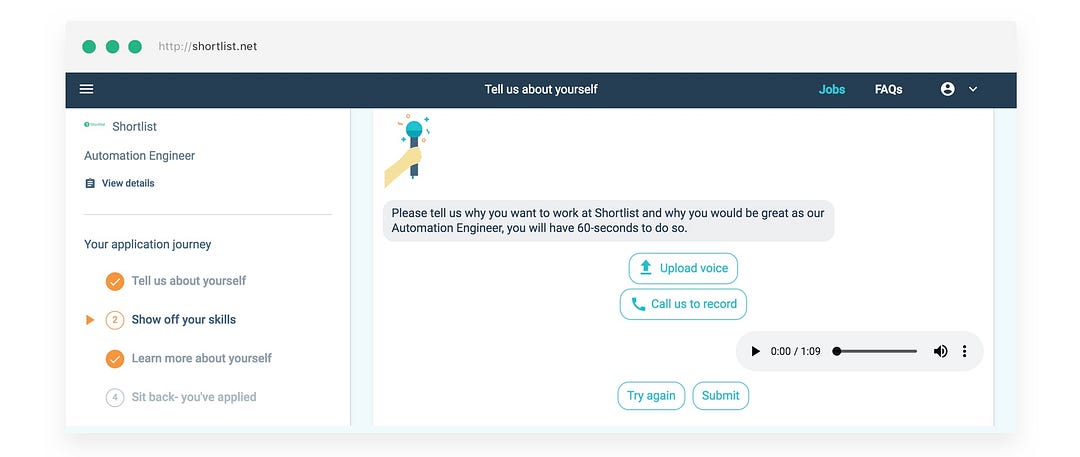
Friendly prompts help candidates understand what to do.
Clear instructions: Friendly prompts, cleaner drop-downs, and lots of messaging tell the candidates exactly what we’re looking for.
Flexibility: Candidates can answer questions in the format they are most comfortable with. For example, they can enter their salary in whichever currency and time period they’re comfortable they’d like.
More flexibility and customization for employers
Hiring managers — what if you could automate every question you ask an applicant during an initial phone screen? That’s essentially what our chatbot does for you! It takes in the key information you would ask to gauge if the candidate is a fit for your role. Here are the features that allow us to replicate the experience of a phone screen, at scale!
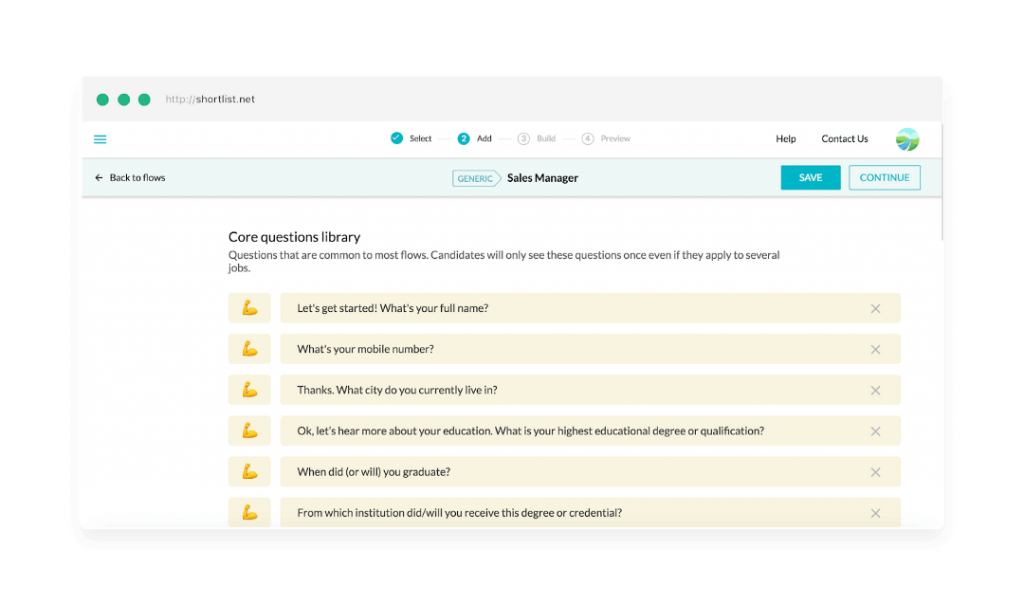
Employers only include questions they need.
More flexibility with the question flow: With our customizable chat, you make sure you’re only asking relevant questions. Depending on a candidate’s response, you can branch to a different set of follow-up questions.
Automated screening: Exclude candidates that don’t meet basic criteria early in the process, just like you would not continue with a phone screen if the candidate didn’t possess a “must-have” skill.
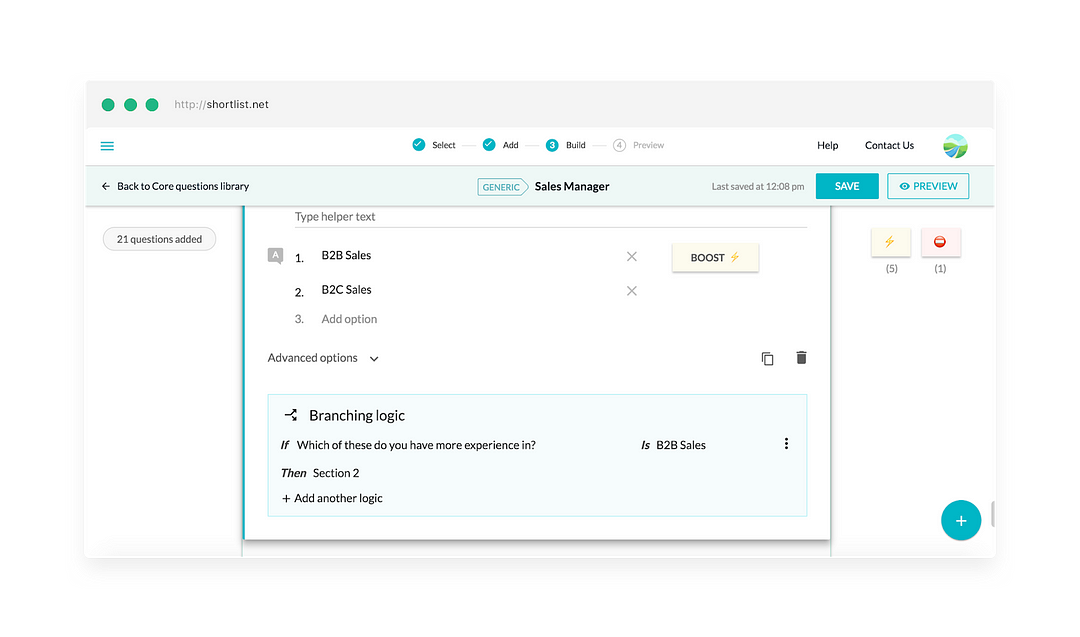
‘Boost’ candidate scores on core requirements. Branch to different sections based on a candidate’s response.
Automated scoring: Give different weight to questions you care the most about. For example, if your ideal candidate has 4–6 years of experience building financial models, you can “boost” responses to the question, and it will reflect in the candidate scoresheet.
Structured data: Responses to chatbot questions live in set columns in our database. If a candidate has answered a question for one of your applications, they don’t need to again.
See for yourself!
We’d be delighted to show you around our new chatbot — email us at sales@shortlist.net for a demo.
We’re excited about making the hiring process as fun and stress-free as we possibly can and there’s so much more we’re working on to achieve this. Stay tuned!
Want more talent and recruitment insights? Sign up for our newsletter here!







